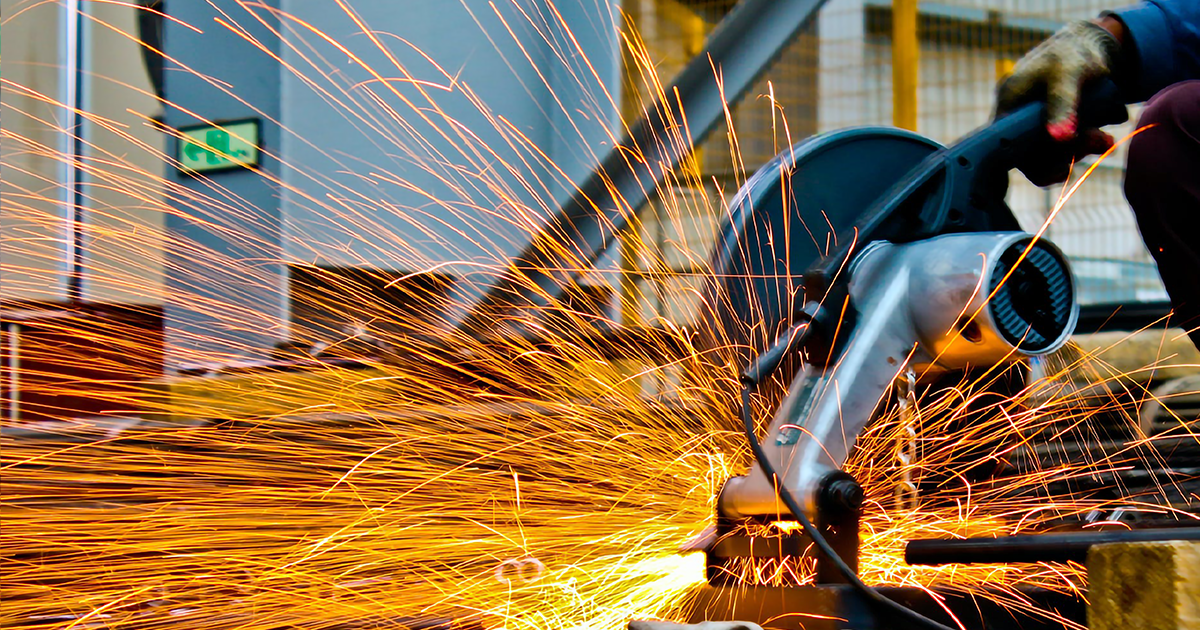Since May 1, 2021, China has implemented a new tariff adjustment for the steel industry. During its modernization process, China has built up a gigantic production capacity for iron and steel products. It is also the largest steel manufacturer or producer in the world, reaching nearly 996 million metric tons in 2019. Steel around the world is used in different manufacturing industries like construction, electronics, advanced manufacturing, and several more industries.
Have a look at our recent article on Consumer Electronics Industry Recovery in China
Although China consumes the largest share of the produced steel itself, export also plays a major role for Chinese steelmakers. Recently, the Chinese government has taken steps to regulate, improve, and drive the steel industry toward high-quality development.
Tariff on steel industry imports
The Chinese government aims to better protect the supply of steel resources and promote the high-quality development of the steel industry. Hence, starting May 1, 2021, the Customs Commission implemented adjustments to the tariffs on some steel products. The adjustments include the provisional zero import tax rate for crude (pig) iron, crude steel, recycled steel raw materials, chromium iron, and other products.
Moreover, the notice raised the export tariffs of silicon iron, chromium iron, high purity pig iron, and other products. The rates below show the adjustments implemented on the exports of steel products.
- 25%: ferrosilicon
- 20%: ferrochrome
- 15%: high-purity pig iron
Following the implementation, the authorities also decided to abolish the export tax rebates of some steel products. The export date indicated on the declaration of the export of the steel products will determine the specific execution time. To check these products, you can download the list here.
The above tariff adjustments are expected to provide the following advantage to the steel industry:
- Reduce the cost of imports;
- Improve the import of steel resources;
- Support domestic pressure reduction of crude steel production;
- Guide the steel industry to reduce the total amount of energy consumption; and
- Promote the transformation and upgrading of the steel industry.
Check the details of tariff adjustments here: Tariff adjustments for export and import of steel products
The updated tariffs will aid importers and exporters in their business of providing high-quality steel used within China (and exported outside). In recent years, controversial accusations surrounding China’s steel industry directed at the State-subsidized Chinese steel mills. These mills are suspected to flood the world market with cheap steel at dumping prices.
Lately, the Chinese government has taken initiative to cut industry overcapacities and overproduction. Nevertheless, this has not affected China’s worldwide share in crude steel production, which has continued to grow and surpass 50 percent in 2017.
The economy of the steel production industry in China
Market highlights
In the past 10 years, China’s steel trade output has consistently maintained more than 50 percent of the world’s steel production. In fact, in 2020 it reached 57 percent of the world’s total output. One of the reasons for this is that Mergers and Acquisitions are prevalent among the big companies in China’s steel industry.
In 2020, China’s steel production rose 6 percent and hit its highest level of 1.1 billion tons. Since the construction of infrastructures in the country has increased, steel production also followed in 2019 when the government encouraged increased groundwork. This upsurge in production coupled with environmental consciousness has driven the price of steel up.
Moreover, steel importation rose in 2020. During the second half of 2020, China’s domestic price of hot-rolled coil (HRC) exceeded that of rebar. As rebar is usually in the lead and the most-consumed steel product, HRC dominance is therefore uncommon in the country. China became a net importer of semi-finished and finished steel over June to September as well as in November of 2020, which had not been witnessed in over a decade.
Forecast
For the whole of 2020, the China Iron & Steel Association (CISA) predicted China’s steel exports to fall 15 percent year-on-year. On the other hand, imports will surge 60 percent year-on-year. Furthermore, the country’s net steel export volume may slump to only 15 million tons from 50 million tons in 2019.
China’s help to cushion the blow of the pandemic on the global steel mills, thus, had been widely acknowledged. For a long while in 2020, the country had absorbed steel supplies from many countries including those in the ASEAN region – China’s usual steel export destination.
Environmental concerns
China targets to reach peak carbon emissions (accounts for about 15 percent of China’s total carbon emissions) before 2025. By 2031, the country will have reduced carbon emissions by 30 percent. However, the steel industry is one of the most polluting sectors in the country. To note, older blast furnaces used in steel production are more polluting than new or renovated ones. Therefore, stricter measures are being implemented around crude steel production in favor of sustainable alternatives.
Less harmful options include the use of more scrap metal, carbon capture blast furnaces, and hydrogen-based steelmaking. Scrap metal is limited as to its availability. Furthermore, the new technology that could replace current practices are still at their infancy and are not yet fully reliable.
U.S. competition
China’s steel industry has always been a major concern for the U.S. despite the latter’s steel production boom. The competition is high among U.S. steel producers due to China’s massive steel trade and investments. China dominates the global steel industry mainly due to full-blown government subsidization. Thus, the dumping of tons of steel in foreign markets has depressed the global steel prices, bringing in extreme difficultly against U.S. producers.
Look back on our article about Trade Deal between U.S. and China: Taking the First Step
Conclusion
The government in China aims to protect the country’s supply of steel resources and promote the industry’s high-quality development through such tariff adjustments. It intends to aid both importers and exporters in providing quality materials and release China from the stigma of being a producer of low-quality steel. Although the new tariff updates are newly implemented and the long-term positive effects are yet to be concluded, these new regulations are seen to foster better relationships between China and its import-export partners.
Contact us
S.J. Grand provides advisory and support on the business set up as well as tax and accountancy services for foreign-invested companies in China. We assist foreign companies with tax optimization strategies to take advantage of China’s various preferential policies. Contact us to get you started.
Moreover, we have been at the forefront of promoting full automation of business operations, especially for startups and SMEs. We have introduced our Cloud-based advanced solution, Kwikdroid, to make business transactions easier with us, no matter what type or size of the company. Visit our Kwikdroid page to learn more about the services we offer.
You may be interested to read about how to manage your company remotely using the advantages of Kwikdroid. Check it out!







